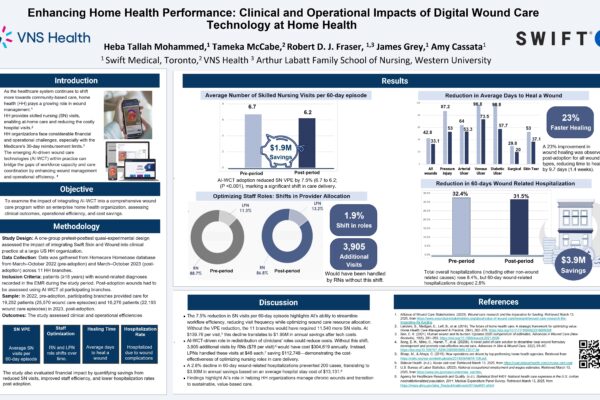Wounds are often called the silent epidemic in healthcare – as patients with wounds frequently suffer from other, more eminent conditions, such as diabetes or hypertension, which conceal the severe impact of their wounds. In reality, wounds impact over 8.2 million patients and cost Medicare up to $96.8 billion annually – and can have a mortality rate comparable to cancer. However, wound care is severely underrepresented in medical education, research funding and clinician expertise at the bedside.
In this piece, we will provide an introductory overview to the different types of wounds and the impact they are having on millions of patients each year.
Generally, wounds can be classified as either acute or chronic in nature:
- Acute wounds: Wounds that progress through the normal stages of wound healing and show signs of healing within 4 weeks.
- Chronic wounds: Wounds that do not progress through the normal stages of healing and have stalled or do not show signs of healing in 4 weeks.
Within each of these classifications, there are several common types of wounds most often encountered in healthcare.
Acute Wounds
| Types of Wounds | Description |
| Surgical Wounds | A surgical wound is a cut or incision in the skin that is usually made during surgery, often varying significantly in size. They are usually closed with sutures, but are sometimes left open to heal. |
| Trauma Wounds | Traumatic wounds are unplanned injuries, such as abrasions, lacerations, skin tears, bites, burns and penetrating trauma wounds. Traumatic wounds are typically the results or accidents or violence and are classified as cuts, lacerations or puncture wounds. |
| Abscesses | An abscess is a collection of pus that gathers under the skin, often the result of a bacterial infection. |
Chronic Wounds
| Types of Wounds | Description |
| Diabetic Ulcers | A diabetic foot ulcer is a full-thickness wound below the ankle, on a weight-bearing or exposed surface in a person with diabetes. Diabetic ulcers often develop in the foot and are related to lower limb neuropathy or peripheral arterial disease. |
| Venous Ulcers | A venous ulcer, also known as venous stasis ulcer, is a wound that takes longer to heal due to problems with blood flow (circulation) in the veins of the legs. |
| Pressure Injuries | Pressure injuries, also known as pressure ulcers or bed sores, are localized damage to the skin and underlying soft tissue as a result of intense or unrelieved pressure, with contributions from shear and friction forces. They usually occur over a bony prominence or in relation to a medical device. |
| Arterial Ulcers | Also known as ischemic ulcers, arterial ulcers form as the result of insufficient blood supply, commonly caused by peripheral artery disease (PAD). Arterial ulcers are often found between or on the tips of the toes, on the heels, on the outer ankle or where there is pressure from walking or footwear. |
No matter the wound type, accurate, consistent and timely wound assessments are key to healing. Continue learning about wound measurement and documentation.





